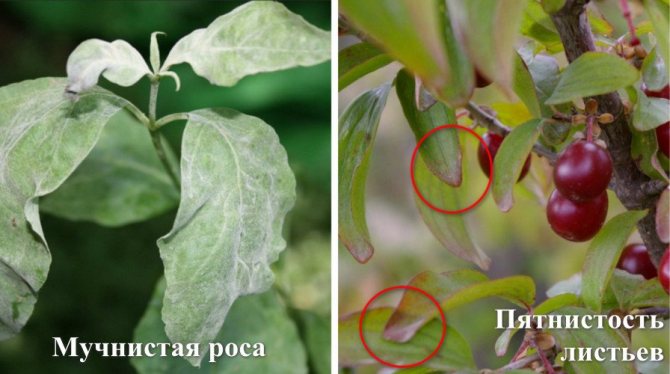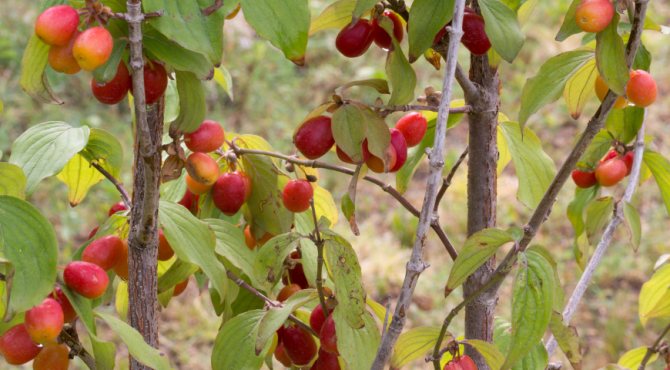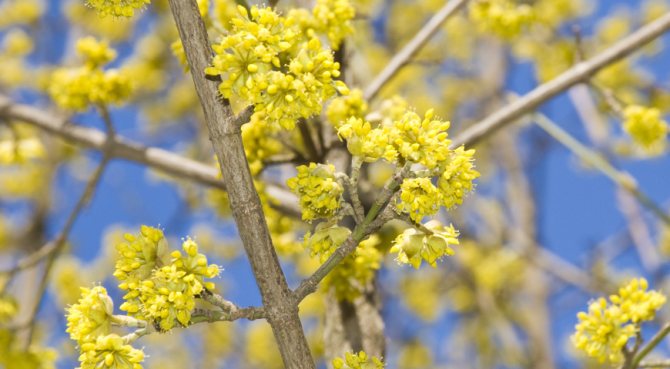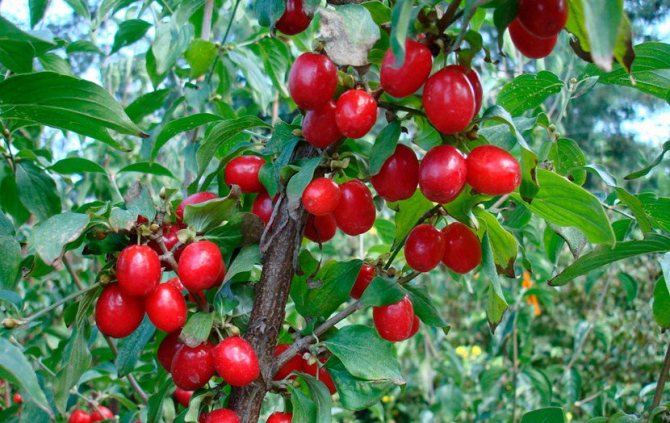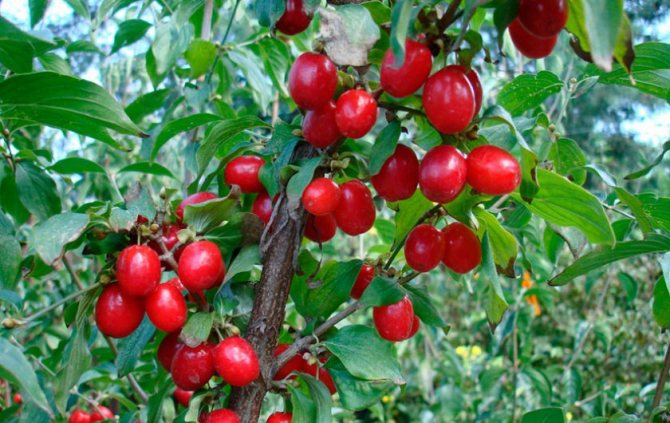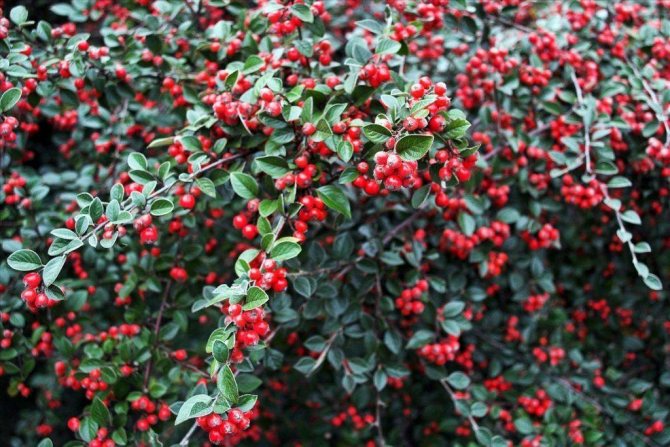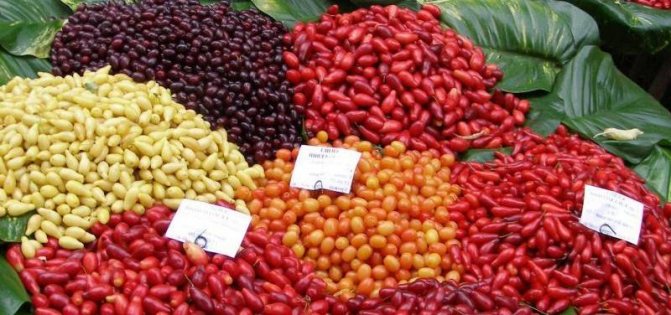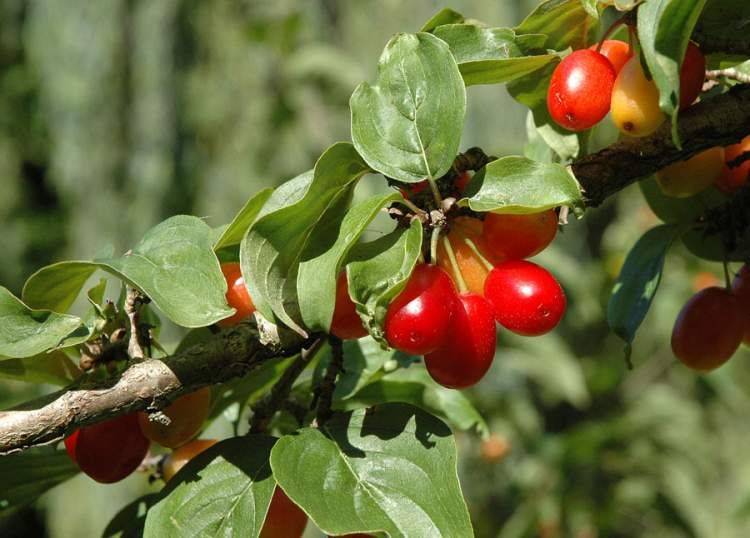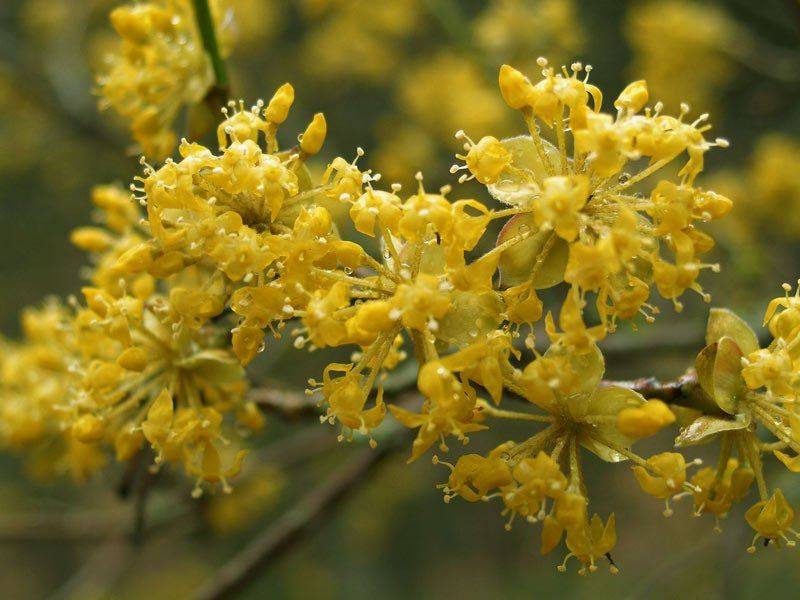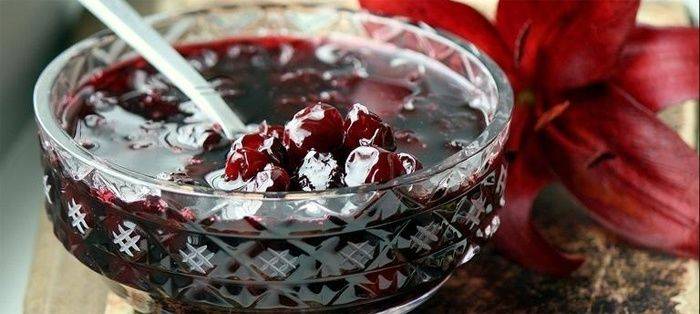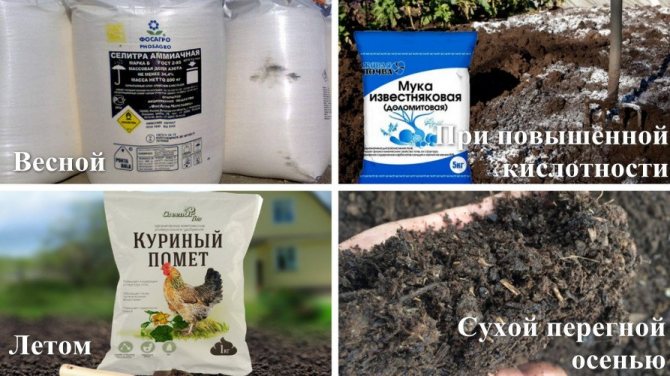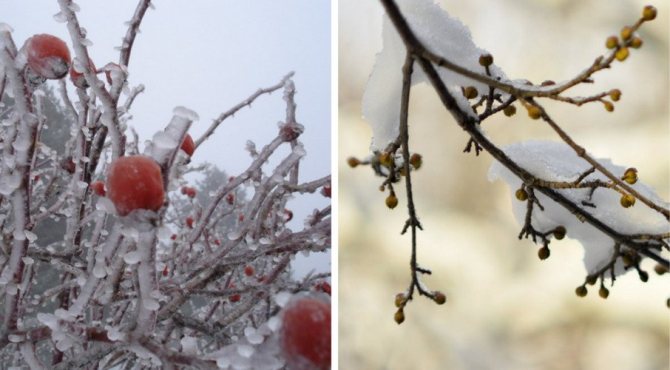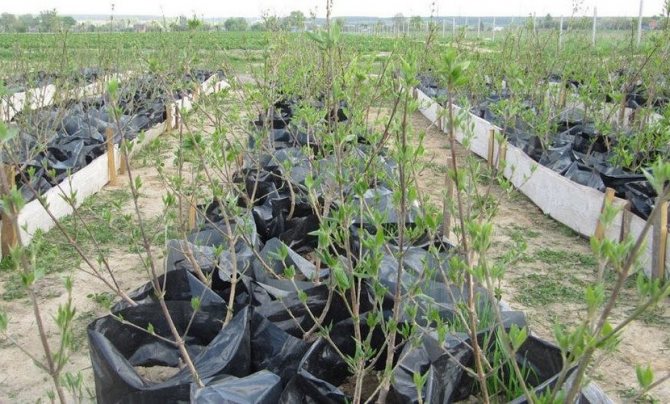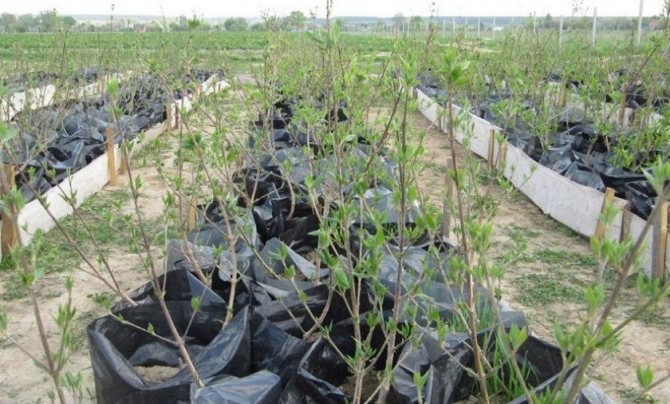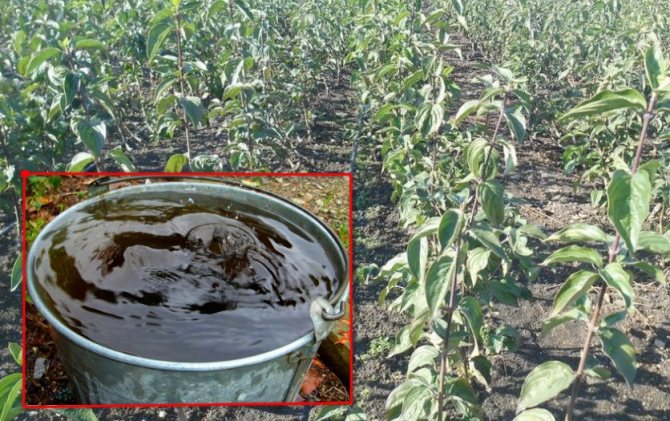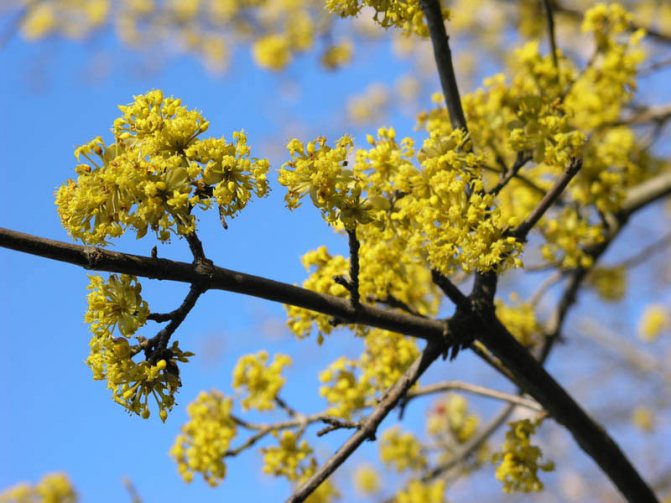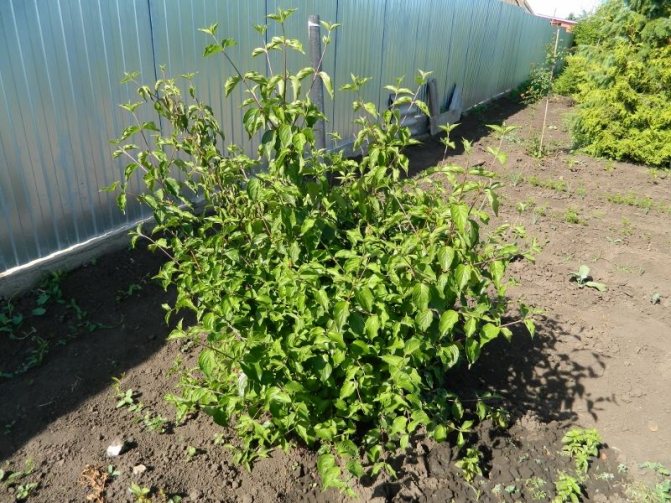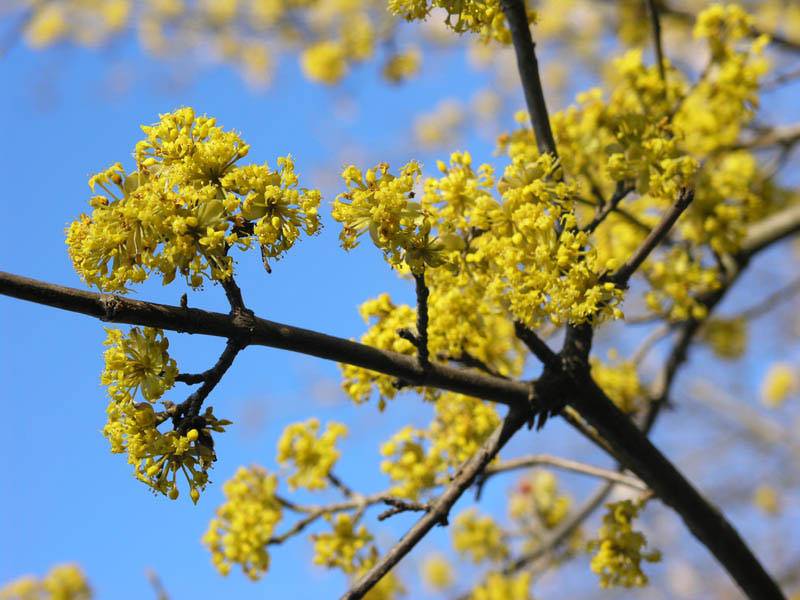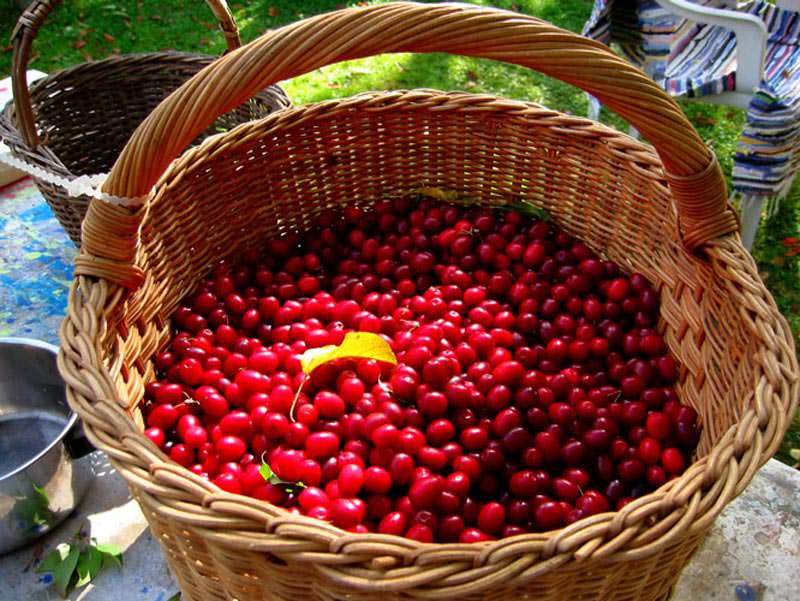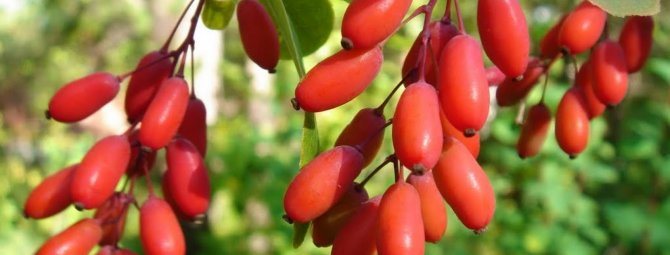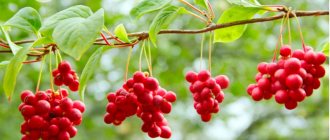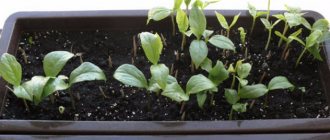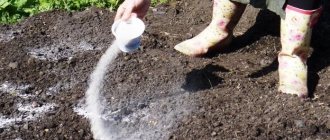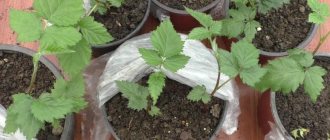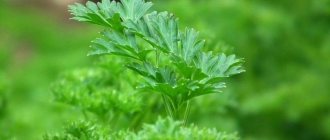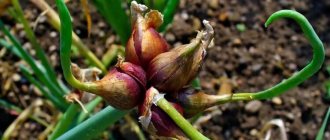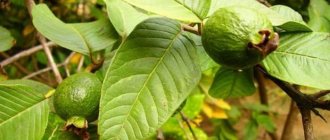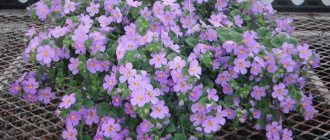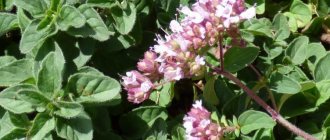The plant got its name from the color of its fruits. In the family of Turkic languages, kizil (Tatar version - kyzyl) is translated as "red". The cultivation of this shrub is most common in the southern regions.
However, many varieties tolerate frost and drought without problems. This is explained by the fact that the dogwood has a strong root system, which goes underground for a meter or more. This allows the plant to extract moisture from both sandy soil and rocky soil.
Adult shrubs grow up to 7 meters, there are also decorative dogwood varieties that outwardly resemble a small tree up to 9 meters high.
Dogwood fruits are tied and ripen for a very long time. The plant begins to bloom in March, and the berries ripen only after 5-6 months.
Growing dogwood in the Moscow region and central Russia
The common dogwood has been cultivated by humans since ancient times. Historians say that 5 thousand years ago, settlements that were located on the territory of modern Switzerland cultivated this plant.
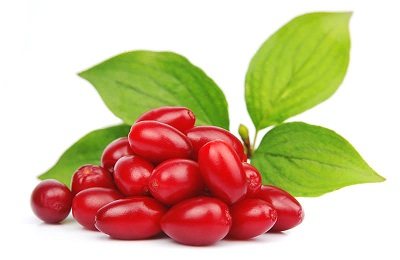
Since then, about 50 varieties have been bred, which can be conditionally classified according to the following criteria:
- shrub crown shape;
- the size, shape and taste of the fruit;
- ripening period;
- color and shape of the leaves.
Despite the fact that dogwood has been cultivated for a very long time, on the territory of Russia it is not often possible to see a shrub growing on someone's site.
This is especially true for the middle zone, the Moscow region and Moscow. This is mainly due to the widespread misconception that the plant categorically does not tolerate frost and dies at a temperature of -15 and below. Many do not know that of all southern fruit plants, dogwood is considered the most hardy.
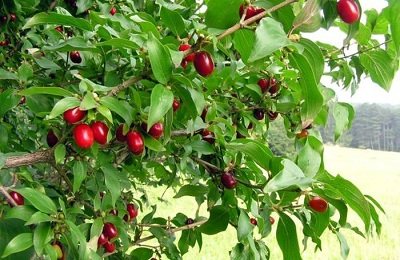

Of course, there are capricious species that require special care and certain climatic conditions. But dogwood varieties have long been bred, tolerating frosts and at 30-35 degrees. The only thing you need to take into account is that young shoots freeze under severe frosts, so in the spring they need to be cut. It is recommended to cover very small seedlings with rags or burlap for the first four years. Otherwise, care and planting are no different from other varieties planted in warmer areas.
For the middle lane and the Moscow region, the best option would be shrubs with an early ripening period. These varieties include:
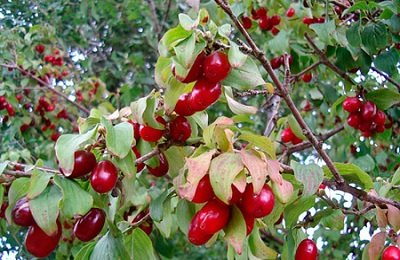

The above species are resistant to frost from -20 to -35 degrees. Thanks to the powerful root system, the plant can recover even after the death of the aerial part. The process of restoring and launching new shoots takes more than one year, therefore, in order to avoid such cases, it is recommended to insulate the fragile shrub for the winter. Although dogwood is not picky about the composition of the soil, it will develop better and faster in nutrient soils rich in lime.
Therefore, the dogwood bush, like any other fruitful plant, needs recharge and mulching of the soil.
The first fruits can be tasted only for 3-5 years of the seedling's life. The number of berries will constantly increase. An adult wild-growing shrub gives about 5-7 kg of fruits, and rather small in size.
Providing proper care and replenishment of the soil, you can achieve 20 kg of yield or more from a bush aged 14-16 years. Cornel has many useful properties, the description of which can be read a little below.
Why is it worth planting dogwood on your site?
This amazing berry will contain a lot of vitamins and useful microelements in its composition. In addition, in folk medicine, not only dogwood pulp is used, but also leaves, branches and even bones. Most use the fruit for antibacterial and anti-inflammatory decoctions. Cornelian tincture lowers blood pressure. Fresh fruits speed up metabolic processes in the body, which helps burn fat.
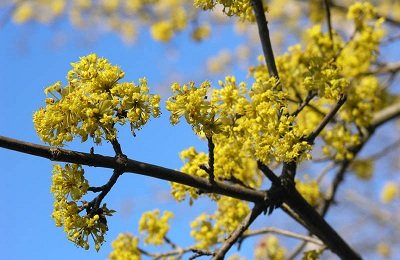

Ripe dogwood helps in the fight against colds, helps to normalize digestion. The berries contain a large amount of pectin, which removes toxins, radiation and toxins from the body. Traditional medicine recommends eating fresh dogwood for severe headaches and in the early stages of the development of multiple sclerosis. In these cases, the fruit, due to its rich mineral and vitamin complex, improves blood supply to the brain and blood circulation in general.
Cornel jam contains a lot of iron, which helps to increase hemoglobin. Cornel strengthens the walls of blood vessels, saturates cells with oxygen, in addition, it is often used in the treatment of such diseases:
- fever;
- various flu;
- scurvy;
- arthritis;
- anemia;
- measles;
- hemorrhoids;
- most skin diseases.
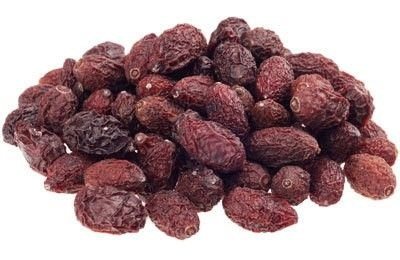

The people use not only fresh dogwood for medical purposes, but also dried dogwood, which is able to retain all its beneficial properties for up to 3 years. Dried fruits are beneficial for diabetes because help lower blood sugar, are used to make pain relievers. Special tinctures of dried dogwood are used as a lotion for dry and flaky skin.
Shrub leaves can be applied to inflamed areas of the skin, to places where the rash appears.
Tea made from dogwood flowers and leaves helps with fever and frequent diarrhea.
You can get rid of pain and breakage in the joints by preparing a special bath, to which a decoction of bark and green leaves is added at the rate of 5 tablespoons per liter of water. The bark and leaf tincture is used as a natural diuretic and also helps cleanse the liver. Tinctures are prepared from the seeds that help with mental disorders. Also, this broth acts as a sedative.


Cornel is one of the most unpretentious fruit-bearing shrubs in terms of climatic conditions. But in order to get the richest harvest possible, you need to provide proper care for the plant in the first years of its life. A young seedling needs feeding, cutting and loosening the soil. Paying due attention to these aspects, in the future, the plant will reward an abundant amount of delicious berries.
Adding an article to a new collection
Dogwood, or male dogwood, is most common in the Caucasus, and in the middle lane it is still a rare guest. All because of the fear of gardeners that he will not survive the harsh winters. Although many varieties have already appeared, adapted to different climatic conditions.
So with proper care, it is quite possible to grow it in the Moscow region. You just need to choose a suitable seedling, follow the planting rules and protect young plants from frost. And to pollinate flowers, plant several seedlings. Without this, it is impossible to get a harvest of berries, because derain is self-fertile.
Pests and diseases
The dogwood plant, which has a strong immune system, practically does not get sick and does not suffer from pests. However, gross violations of agricultural technology or excessively unfavorable weather conditions can weaken the plant, after which it can become prey for fungal infections and pests. In a similar situation, the dogwood can get sick:
- Powdery mildewforming a powdery white coating and liquid droplets on leaf surfaces. The disease inhibits the growth of foliage and, accordingly, the development of the entire plant.They fight fungal infection by treating the foliage with a soda solution prepared from 60 g of soda in a bucket of water. A solution of 60 g of antibacterial soap in a bucket of water, as well as the use of fungicides such as "Topaz", give a good effect.
- Leaf spot, manifested by the formation of red-brown spots on the foliage, which inhibit photosynthesis. This fungal infection is fought with copper-containing preparations.
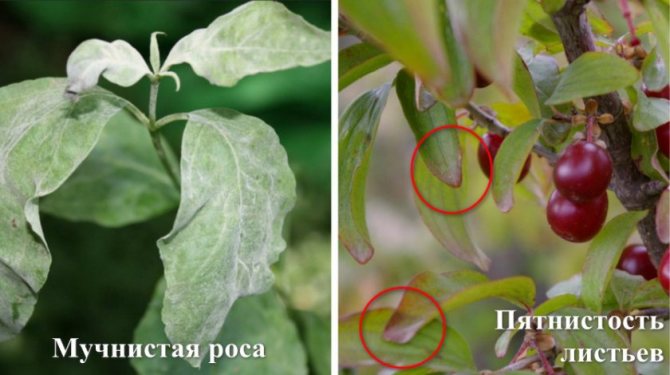

Among pests, the most dangerous for dogwood polychrome, whose caterpillars eat foliage and arrange their nests on young branches. They destroy the pest by means of Parisian greenery and in the process of manually collecting nests.
Until recently, a rare guest in the gardens near Moscow, now the dogwood is taking an increasingly prominent place in them. Its high gastronomic qualities, together with unpretentious care and impressive decorativeness, do not leave indifferent many gardeners in the Moscow region.
Dogwood: why it is worth landing
Why bother planting dogwood when there are many other fruit trees and shrubs that are perfectly adapted to our conditions? - you ask. There are some, they just do not have the qualities that are inherent in this southern guest.
First, it has a high decorative effect. And this quality has long been noticed by landscape designers who recommend it for decorating plots. It is one of the first to bloom, back in April. Its bright yellow flowers bloom earlier than the leaves on the plant, and look advantageous among bare trees.
You can grow a hedge from dogwood, which will not lose its decorative effect until late autumn, painting a dull landscape with its bright fruits, which, by the way, are not only red, but also yellow, pink and even black.
However, the gardener, at his discretion, can give this ornamental plant the shape of a bush or tree. It all depends on the pruning. To give the dogwood the shape of a tree in the first few years, all shoots below 50-70 cm are removed from it, and so that the plant looks more like a bush, only diseased and growing branches are cut off from it.
And, of course, the most valuable thing in dogwood is the fruit, which is in no way inferior and even superior to the famous goji berries. They contain more vitamin C than lemon. A large amount of pectin in berries helps to eliminate toxins from the body, and iron helps to increase the level of hemoglobin.
In addition, dogwood fruits strengthen the immune system, normalize blood pressure, lower blood sugar levels, prevent sclerosis, act as an anti-inflammatory agent and normalize metabolic processes in the body. The leaves and roots of the plant also have a healing effect.
Dogwood is undemanding to soil and maintenance, tolerates slight shading. However, there are still some difficulties in growing.
The healing properties of dogwood (video)
As practice shows, dogwood can be grown in bush form with six skeletal branches. This method of shaping works especially well on self-rooted seedlings. In this case, the bushes are low and rather spreading, which contributes not only to easier care, but also to the convenience of harvesting.
| Print Press Print or CTRL + P to print the page | 4.25 Rating 4.25 (2 Votes) |
The main problems in growing dogwood
There are two main problems in growing dogwood in the middle lane: the weak winter hardiness of the plant and its early flowering. Due to a prolonged significant drop in temperature, it may die, and with recurrent spring frosts, young shoots partially freeze, so they should be cut in spring. However, the plant is able to recover and grow again from the root.
But early flowering can leave without a crop, because in April there are still frosts that can ruin the flowers.And pollinating insects do not always wake up so early and go in search of food. But planting several plants on the site will solve this problem.
Which variety of dogwood to choose
Although dogwood blooms very early, the fruits ripen for a long time: 5-6 months. Therefore, when choosing a variety for the middle lane, pay attention to early maturing.
The earliest ripening dates (August - early September) are in the varieties Alyosha, Elena, Vladimirsky. They all differ in fruit color and size. The Elena variety has medium-sized red berries, Alyosha has bright yellow large fruits, and Vladimirsky has large burgundy-black.
Mid-season varieties such as Vydubitsky, Svetlyachok and Yantarny with dark red, dark cherry and almost transparent berries are also suitable for the middle lane.
You need to purchase seedlings grown in the same area where they will grow. Saplings from the southern regions will not survive the frosty winter.
For the northern regions, it is better to grow a plant from a seed, so that it is adapted to the local climate. To do this, it is necessary to stratify the planting material within a year and a half in wet sawdust. In the spring, at the end of the process, plant the seeds in the ground to a depth of 3 cm. In the first winters, insulate the planting site with spruce branches or deciduous litter.
Features of cultural cultivation
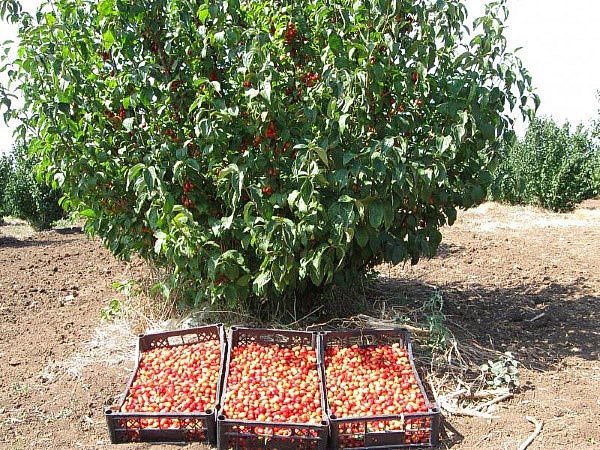

Planting and caring for dogwood will not cause much trouble if you take a responsible approach to the choice of variety and place for the shrub. Only dogwood varieties that are capable of growing and bearing fruit in the local climate should be planted unambiguously. For example, in the middle latitudes, late-ripening dogwood species will not have time to ripen before the arrival of winter, which means that early varieties should be preferred.
When choosing a place for planting a perennial, it is better to stay in the southwestern section, which meets the following requirements (there the dogwood will grow well and bear fruit abundantly):
It is necessary to plant dogwood at a distance of at least 5 meters from fences and trees, so that the crown can receive full-fledged lighting, and the bush has room to grow.
Planting and growing dogwood
For planting dogwood, select the warmest place on the site, protected from the wind, which is well warmed by the sun. The plant is undemanding to the soil, in central Russia it will grow almost everywhere, except for swampy and waterlogged lands. He especially likes clayey soils with sufficient lime content and good drainage.
For planting, choose seedlings no older than two years, up to 1.5 m high, with 3-5 skeletal branches. They should not have kinks of branches and bark, signs of diseases and pests. For the best survival rate, choose seedlings with a closed root system.
Before planting, the plant must be carefully examined and damaged roots and shoots must be removed. Treat the trimming points with a clay mash. In the fall, remove all leaves from the seedling for planting.
In spring, plant dogwood in April before budding, in autumn - in September - early October, but no later than 2-3 weeks before the onset of frost.
If you plant two seedlings in the hole, their trunks will intertwine over time, forming a single plant, the flowers of which will pollinate each other.
Shade young plants in the first years from the sun, water abundantly, because they do not tolerate drought, and cover for the winter. Loosening the soil should be done carefully so as not to damage their root system.
Cornel grows slowly, the first fruits can be tasted in 3-5 years, and active fruiting will begin even later.
The plants are fed in the third year after planting: in the spring, at the beginning of the growing season, 15-20 g of ammonium nitrate or a bucket of mullein solution diluted in water (in a ratio of 1: 5) are introduced, and in late summer or early autumn - 450-550 g of wood ash and 70 -90 g superphosphate.
Further, fertilizers are applied regularly to get a good harvest of berries. But dogwood can do without fertilizers, because under natural conditions it grows on poor soils.
Plant pruning is best done in winter or early spring. Prune diseased and dry branches, thin out too dense crown. When the dogwood is 20 years old, prune it for anti-aging. This will increase its yield.
And although the dogwood grows slowly, it lives for a long time (up to 200 years), so your descendants will also enjoy its tasty and healthy fruits.
Dogwood is not often found in our area. But since this plant has unsurpassed useful properties, it is worth considering how to start growing it in a summer cottage.
Planting a dogwood and subsequent care for it is an absolutely not complicated procedure, which even for a novice gardener can do.... This shrub is unpretentious, and at the same time has delicious berries.
Shrub planting
You need to plant dogwood in the fall. Each region has its own time when it is necessary to start this work. Popular wisdom recommends: the most effective planting occurs at the time when the poplar began to shed its leaves. In the spring, in the middle lane, it is very difficult to guess the right time for planting: the period when the soil is already warming up, and the buds have not yet begun to bloom.
Dig holes with a depth and diameter of 80 cm at a distance of about 5 m from one another. Drive a stake into the ground from the direction of the prevailing winds, it will hold the tree in windy weather. Place the seedling behind the stake and bury it so that the root collar is a few centimeters above ground level. After watering and rains, the soil will settle, and it will take the desired position. First, pour fertile soil from the top layer into the hole so that the roots take root in the nutrient medium. Spill the soil well with water and tie the trunk to a peg. After a heavy downpour, make sure that the depth is calculated correctly: if the planting is high and the root collar is above the ground, the bush will develop poorly, and when deepened, it will give many root suckers, which will make it difficult to care for the plant.
Some gardeners believe that all branches of the seedling need to be shortened by a third, others do not, and the tree takes root well. What to do is up to you, you can cut off the shoots on one bush, but not on the other and see how it is best. Do not forget that each site has its own soil, its own microclimate, therefore, crops are grown according to different schemes. Any recommendations should be checked in practice, each owner should have individual experience and knowledge about what kind of care his pets need.
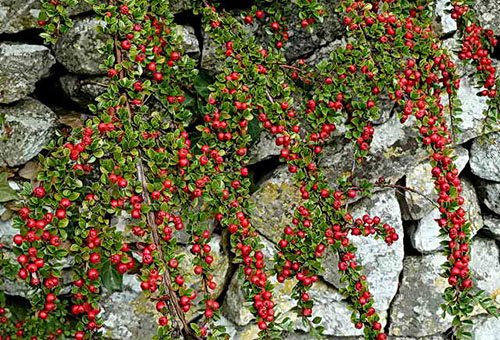

Maturation of dogwood in the Moscow region, Krasnodar Territory and Ukraine
Kizil prefers the warm climate of the Caucasus and Transcaucasia, where it grows in mountain forests, on sunny edges, as well as in thickets of other shrubs. In addition, it grows in the territory of Ukraine, Crimea, Central and Southern Europe, as well as in Western Asia. On the territory of Russia, dogwood is successfully cultivated in various regions - Moscow region, Krasnodar Territory and other regions.
The beginning of flowering of the common dogwood falls on March, and the end - in April. Fruits ripen closer to the middle of autumn, depending on the region of growth. When the fruits are ripe, they begin to fall off the bush. The ripeness of the dogwood fruit can be determined by taste. The crop is harvested every year in September, and the roots are harvested at the end of November..


Freshly picked dogwood berries
For long-term storage of berries at home, they are cut off as they begin to ripen. The fruits are placed in small baskets where they ripen., and then stored at a temperature of 0 - +2 C.
Nice, sweet and sour tasting with a specific aroma, dogwood fruits are often consumed fresh, and experienced housewives are in a hurry to buy dogwood to make exquisite jams, jellies, jams, juices, compotes, marmalades, or simply fill the fruits with sugar and store. Also, berries can be saved by freezing.
In its raw form, dogwood berries are stored in a refrigerator (in a plastic bag with holes) for no more than 12 days.
Reproduction of dogwood seeds at home
Dogwood can be propagated using a bone, i.e. germinate it. To do this, take ripe berries, free the bone from the pulp and place them in boxes with wet sawdust or moss for one year, regularly maintaining a moist environment. This method is used to stratify the seeds before planting them. The seed of this plant is not divided into cotyledons. In this regard, it should be placed in the ground no deeper than 3 cm. Unstratified seeds germinate only after 2 years, while not all... Sprouted seeds germinate in the year they are sown.
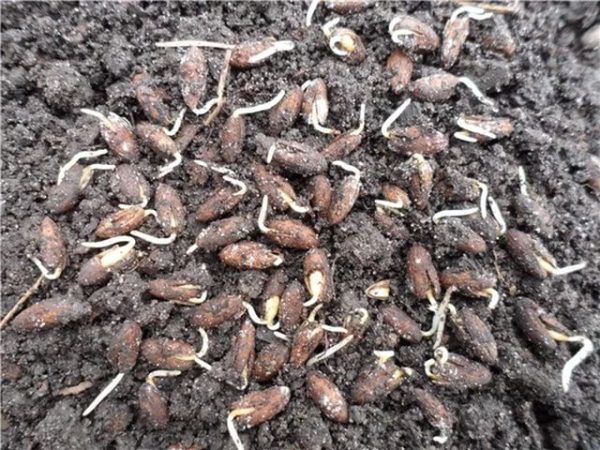

Sprouted Dogwood Seed
Taking care of the seeds is simple: watering, feeding, at the beginning of growth, shading from hot sunlight. During the first year, seedlings grow up to 3-4 cm, by the end of the second - up to 10-15 cm ... Seed-grown dogwood berries are harvested 7-10 years after sowing.
The varietal properties of the dogwood, like all fruit plants, retains during vegetative propagation. Dogwood can be propagated by grafting, green cuttings and replanting. The most efficient way - reproduction by budding, the survival rate of the eyes is 92-97%
Reproduction methods
Seeds
Due to the low germination of cotoneaster seeds (only about 50%), this method is considered ineffective and unpopular. Seeds will need preparation before planting in open ground, which will significantly speed up the germination process in the spring.
Freshly picked in the autumn, the fruits are left for a while for natural drying, which will help to extract the seeds from the pulp much easier.
The recovered seed is washed with water and soaked in a small glass container in water at room temperature for 10-20 minutes. Seeds floating on the surface are not suitable for sowing, they can be thrown away, and those that have sunk to the bottom are used for planting. This will require a planting box with a substrate of equal parts of peat, sand and humus. The cotoneaster seeds, pre-soaked for several hours in a growth stimulator, are deepened by 5-7 mm and sprinkled with a thin layer of dry sand, after which the surface is moistened with a spray bottle. In the first weeks of March, germinated seedling seeds are planted in open ground.
Cuttings
The rooting rate of cuttings depends on many factors and varies from 50 to 90%. Cotoneaster cuttings 10-15 cm long with two internodes are cut from the apical shoots at the end of June. Before planting in the ground, they are placed in a root-stimulating solution (for example, "Heteroauxin") or treated with "Kornevin". They are planted in a moist substrate, consisting of equal parts of sod land, humus and sand, and then covered with a glass jar or a bottle of plastic.
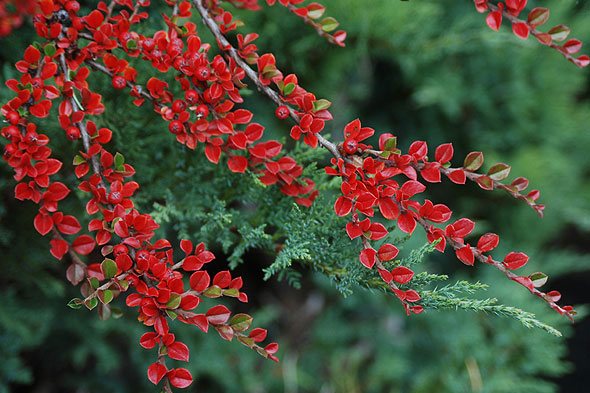

Care consists in regular watering and airing, and a week before transplanting into open ground - in hardening.
Layers
This method is most convenient and effective for ground cover species of cotoneaster, whose shoots are close to the soil surface. The lowest branch is pinned with a wire clip or hook to the ground and sprinkled with humus or peat on the shoot.
Rooted cuttings are separated from the adult bush only the next year and planted in a permanent place.
By dividing the bush
This method can be used in spring and autumn, but only if there is an adult cotoneaster bush on the site. The shrub is dug out, the root part is divided into several parts with a sharp knife and immediately planted. It is important that each section has several young roots and growth points.
When to plant dogwood in different regions of Russia?
The best period for planting shrubs on open ground in the southern regions is autumn. It is not difficult to determine the time for planting dogwood - as soon as poplar leaves begin to fall... It is recommended to plant this plant in the fall, since during spring planting it is necessary to plant it in a rather short time: between the time the soil warms up and the period when the buds of the bush begin to bloom.
In the autumn period, dogwood is planted no later than mid-October, 2-3 weeks before the onset of frost... Well-watered and well-watered shrubs manage to take root, tolerate winter well and begin to grow rapidly in early spring.
Advantages and disadvantages of autumn planting
Autumn planting has several advantages:
- Cornelian seedlings planted in autumn manage to heal damaged roots during the winter and build up new suction roots by spring. Thanks to this, the young plant is able to withstand the early spring droughts and dry winds characteristic of the southern regions without complications.
- It is much more profitable to buy dogwood in autumn.... Gardeners and nurseries sell freshly dug planting materials, resulting in a huge selection of products at affordable prices.
- Fall planting is a bit of a hassle... It is enough to do only one watering, and nature will do the rest of the work on its own. Rainy weather in autumn provides the dogwood with the necessary moisture and comfort.
- Another important advantage is saving time... Autumn planting of dogwood seedlings frees up a large amount of time and effort for other work, which becomes quite a lot with the onset of springtime.


The soil for growing ready-made dogwood seedlings should be prepared in the summer.
Timing of fruiting
In the southern regions, dogwood actively begins to bloom in March-April, and the first fruits appear by mid-August. The fruit is fully ripe in early September, but true connoisseurs of this berry love to pick it after the first night frosts.
In mid-latitudes, you can eat dogwood no earlier than mid-September. And in early October, under the influence of real frosts, the berries crumble abundantly, so by this time they usually have time to harvest the crop.
As a garden plant of southern origin, dogwood is still little known to a wide range of amateur gardeners. Meanwhile, it deserves attention: ripe fruits, ripening in late August - early September, are tasty fresh and processed, transportable and can be kept fresh for a long time.
Fruits can be of various shapes: from round-ovoid and oblong to bottle-shaped, pear-shaped and barrel-shaped; colors - from yellow-orange-red to almost black. Fruit size - from 25 to 45 mm long and 16-20 mm in diameter, fruit weight 5-7 g. They are sweet-sour and sweet taste, slightly tart, have a hard oblong stone, long peduncle and tend to shedding when ripe.
Dogwood is winter-hardy (withstands frosts down to -35 ° C), drought-resistant, but picky about growing conditions. However, despite its frost resistance, dogwood is a thermophilic plant. In the conditions of Belarus, especially in the northeastern regions, it should be planted in well-lit places protected from cold winds. The best soils for it are medium loams.
How to prepare a seedling?
During the acquisition of seed, you should focus on the root: the more powerful it is, the faster the plant will develop. Weak, weathered, thin roots with obvious signs of soreness should be treated with concern. You need to purchase powerful seedlings with 2-3 root branches at least 30 cm in length... The bark on the trunk should be intact and the branches intact.
To fully ensure the viability of the plant you like, you need to slightly cut the bark. If the incision is green - means the choice is correct, if brown - you will have to continue searching for a suitable dogwood.
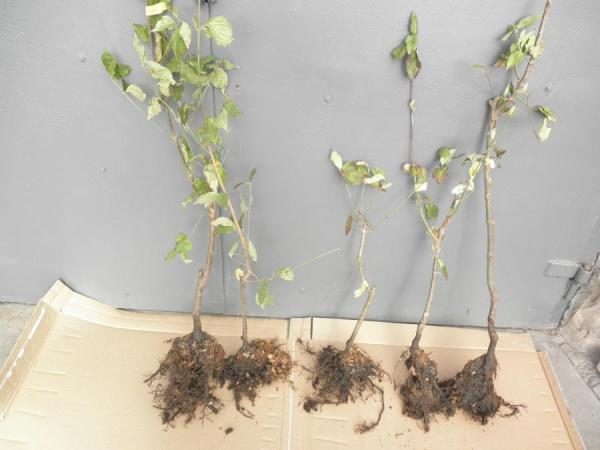

Before planting dogwood seedlings, they should be placed in water for several days.
The seedling rhizome should be well moisturized. In case of long-term transportation, it is wrapped in a damp material and placed in a plastic bag. If the roots have dried up during the transportation period, they should be placed in water for several days before planting.... If, after the purchase, it is not possible to immediately plant a seedling, it is added dropwise at an angle in a shaded place. It is important here that the soil covers all the roots as well as half of the seed. A richly watered plant in this form can be stored for a month.
Choosing a place for planting in a garden or cottage
What is the most suitable place in the country for growing dogwood? Any site is suitable for an unpretentious dogwood. To harvest good yields, the soil must be fertilized, drained, moist and alkaline..
To test the acidity of the soil, you need to drip 2 drops of table vinegar on a handful of earth. In an alkaline environment, small bubbles appear, indicating the required amount of lime.
Dogwood does not take root in swampy soils. In addition, clayey areas and poorly lit areas should be avoided. For the first 5 years of growing this shrub, partial shade is perfect.... Then the dogwood can be transplanted into a sufficiently lit area of the garden. To save space, it is advised to plant a shrub between old trees, which, with their shadow, will protect its root system from drying out. Dogwood gets along with each of the fruit plants, the only exception is the walnut.
Description of the process of planting seedlings on open ground in the fall
To plant the dogwood correctly, you must follow the following steps:
- Before proceeding with planting, the plant should be carefully examined again and prune broken branches and damaged roots... Then it is good to process all the roots with a previously prepared clay mash. When planting in autumn, the foliage must be carefully removed from the dogwood.
- The recess for the seedling should easily accommodate the rhizome. Fit pit 30 - 50 cm deep .
- Digging a hole into it drive in a stake, to which you will then need to tie the plant.
- Place about 15 cm of pebbles at the bottom of the hole or expanded clay. If the soil is scarce, the drainage is covered by a third of leafy soil.
- Cornel prefers potassium-rich soil. You can enrich it with lime.mixed with the substrate in a ratio of 150 g to 1 mg.
- When placing a seedling in a pit, its roots must be carefully spread, and the root collar is under 2 - 3 cm of soil.
- Falling asleep the hole, you need to watch that voids do not appear around the roots. To avoid this the planted material should be trampled down and well wateredb.
- Shrub without fail mulch about 10 - 15 cm ... This procedure is necessary so that the roots located superficially do not dry out. To do this, you can use pine needles, sawdust, straw or hay.
- 7 days after planting the bud near the dogwood should be compacted and watered again.
Shrub Care is an Important Moment for Getting a Good Harvest
Dogwood does not need special care. The main thing is to water it constantly for one year from the time of planting. Watering is carried out 2 times a week. To prevent water from spreading over the territory, it is worth making a furrow around the seedling.
In the first growing year, you need to monitor the condition of the leaves. If they begin to dry out and curl, this indicates that the plant does not have enough moisture. Also for the first 3 years, gardeners need to monitor the cleanliness of the soil near the dogwood... Weeds growing at a distance of 1 m from the plant should be disposed of.
To ensure improved air exchange of the layer in which the roots of the plant are located, it is necessary to periodically loosen the soil about 10 cm deep. To make it more convenient to deal with this process, it is necessary to loosen it the next day from the moment of watering.
For high yields, the shrub is fertilized several times throughout the year. It is believed that during the growing season, dogwood needs nitrogen-phosphorus supplements, and in the autumn, potassium supplements.
Some gardeners alternately add humus and compost, or every year at the beginning of the summer period they add water with chicken droppings under the plants in a ratio of 10: 1 ... Others make fertilizers from 0.03 kg of ammonium nitrate and one bucket of humus. At the end of August, 0.5 liters of wood ash is poured under an adult plant. And at the end of the harvest, it is advisable to add 0.1 kg of superphosphates. However, lime is recognized as the most important fertilizer. Thanks to her, potassium is present in the soil, which affects the future number of fruits.
When caring for dogwood, regular soil tillage is essential.... It is carried out annually at least 6-7 times, regardless of the age and fertility of the shrub. They start processing in the spring, and finish in the fall, after collecting all the fruits. The final stage of loosening the soil around the plant is its mulching.
Does an unpretentious dogwood need care
Keeping a dogwood tree is easy, but you can make the job even easier if you cover the ground around the trunk with a thick layer of mulch after planting. Make sure that the root collar is not covered, it should be in the air. Weeds will not break through the compost or mowed grass, the ground there will always be loose and moist. Dogwood roots are mainly located in the upper soil layer. In dry weather, you need to water the bushes, and it is better to organize a drip irrigation system.
From May to autumn, the shrub works hard: energy is spent on the formation of fruits, and on growing young shoots. For these processes to take place correctly, the plant needs a sufficient amount of nutrients. Use fertilizers with a predominance of nitrogen and phosphorus until mid-summer, and potassium is needed in the second half of the season. In nature, dogwood prefers calcareous soils, because without calcium, the growth and formation of fruits are impossible. If this component is not in the soil of your site, add it to the top dressing.
Frequent pruning of dogwood is not necessary. Before the growing season, only diseased, dry and broken branches should be cut so that they do not become a source of infection. To give shape to a young plant, leave a short, about half a meter, stem and 5 skeletal branches. To rejuvenate plants over 20 years old, prune off branches that are 4 years old. In their place, new fruiting shoots will appear. The tree tolerates shearing well, and if you want to use it as an ornamental plant, you can give the crown an unusual shape.
Dogwood is resistant to diseases and pests, and proper care will make the bush even stronger. And yet, do not forget to inspect the plant from time to time in order to notice problems in time.
- Powdery mildew - white bloom on the shoots. Treat the plant with colloidal sulfur.
- Rust - yellow spots on the leaves. The bush must be sprayed with Bordeaux liquid.
- Spotting. Bordeaux liquid will also help from this disease.
- Snail worm. The pest is destroyed with lime.
- The caterpillar is a polychrome. Sprinkle the dogwood with Parisian greens.
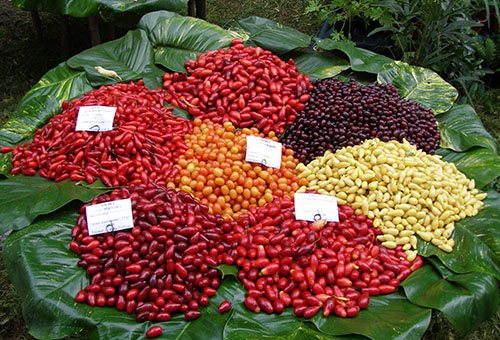

Dogwood can be grown and harvested not only in the south, but also in the northern regions. If the plant is properly cared for, it will bear fruit for up to 100 years. You can leave one trunk and grow the dogwood as a tree, or not trim the lower shoots and get a bush.
In order for the dogwood to develop well and bear fruit, you need to choose the right varieties and planting method. Growing from seeds is a laborious task, but sometimes only this method is possible in the northern area.Good results are obtained by budding: on a winter-hardy rootstock, you can try to grow shoots of delicate varieties.
Dogwood is tenacious and unpretentious, it will endure any conditions. Does the plant need care? If you want to eat enough berries, do not forget about watering and feeding. You can leave the bush completely unattended, but it will not give good yields. Love your green pets, and your site will always be beautiful and productive.
How to transplant an ordinary dogwood?
If there is a need to transplant a plant from one site to another, the technique of reproduction by dividing the bush is applied.
For one year, this method can be used in early spring or late autumn. The plant is removed from the soil and freed from old branches. The root is cleaned of soil, and the shrub is cut into several parts... The roots are trimmed, the old shoots are removed. After that, the individual parts are planted in prepared holes.
The common dogwood is a long-liver. It can produce excellent harvests for 100 years. ... Therefore, if you plant a dogwood, it will delight more than one generation with its tasty and healthy berries.

